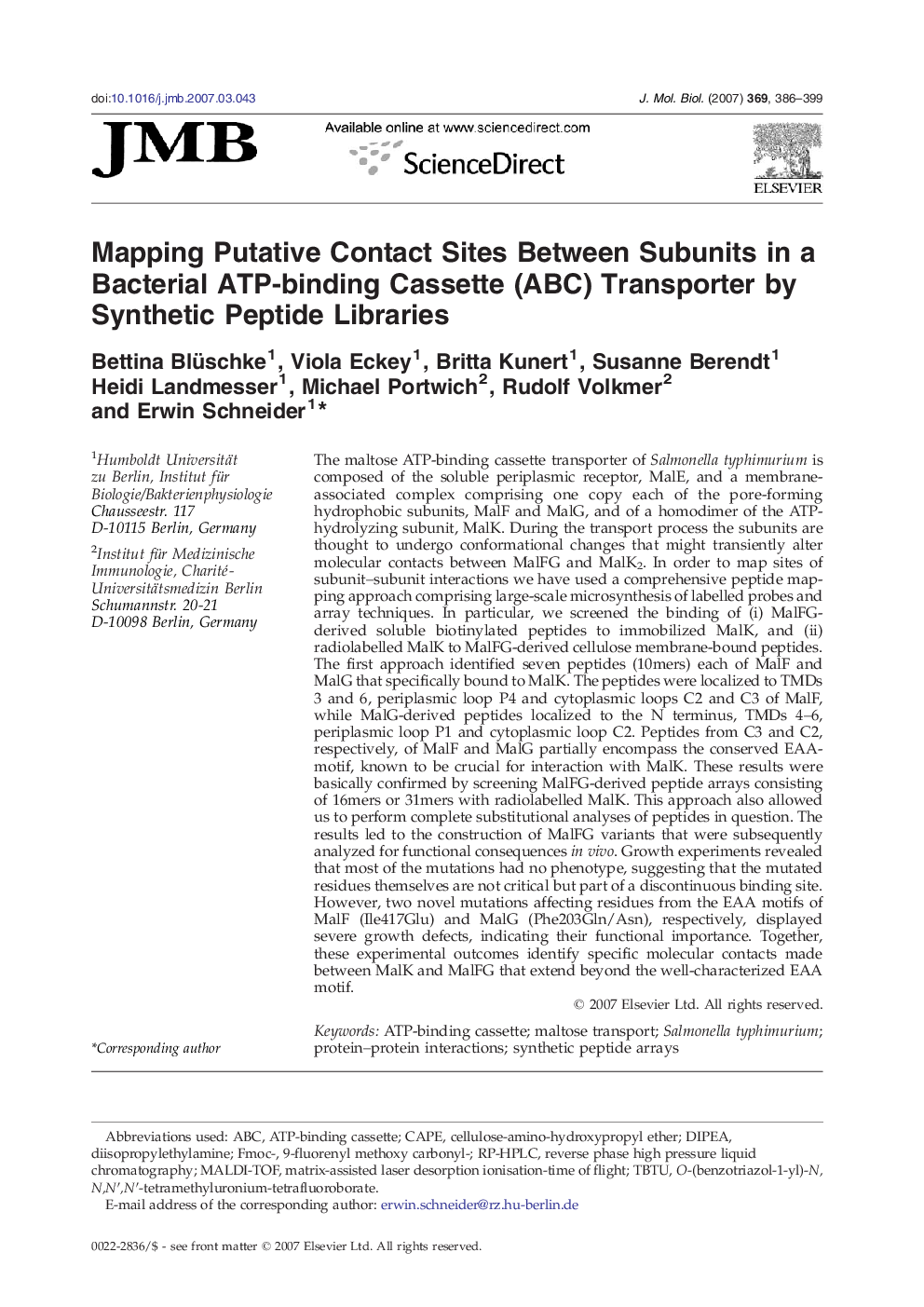| کد مقاله | کد نشریه | سال انتشار | مقاله انگلیسی | نسخه تمام متن |
|---|---|---|---|---|
| 2188582 | 1096178 | 2007 | 14 صفحه PDF | دانلود رایگان |

The maltose ATP-binding cassette transporter of Salmonella typhimurium is composed of the soluble periplasmic receptor, MalE, and a membrane-associated complex comprising one copy each of the pore-forming hydrophobic subunits, MalF and MalG, and of a homodimer of the ATP-hydrolyzing subunit, MalK. During the transport process the subunits are thought to undergo conformational changes that might transiently alter molecular contacts between MalFG and MalK2. In order to map sites of subunit–subunit interactions we have used a comprehensive peptide mapping approach comprising large-scale microsynthesis of labelled probes and array techniques. In particular, we screened the binding of (i) MalFG-derived soluble biotinylated peptides to immobilized MalK, and (ii) radiolabelled MalK to MalFG-derived cellulose membrane-bound peptides. The first approach identified seven peptides (10mers) each of MalF and MalG that specifically bound to MalK. The peptides were localized to TMDs 3 and 6, periplasmic loop P4 and cytoplasmic loops C2 and C3 of MalF, while MalG-derived peptides localized to the N terminus, TMDs 4–6, periplasmic loop P1 and cytoplasmic loop C2. Peptides from C3 and C2, respectively, of MalF and MalG partially encompass the conserved EAA-motif, known to be crucial for interaction with MalK. These results were basically confirmed by screening MalFG-derived peptide arrays consisting of 16mers or 31mers with radiolabelled MalK. This approach also allowed us to perform complete substitutional analyses of peptides in question. The results led to the construction of MalFG variants that were subsequently analyzed for functional consequences in vivo. Growth experiments revealed that most of the mutations had no phenotype, suggesting that the mutated residues themselves are not critical but part of a discontinuous binding site. However, two novel mutations affecting residues from the EAA motifs of MalF (Ile417Glu) and MalG (Phe203Gln/Asn), respectively, displayed severe growth defects, indicating their functional importance. Together, these experimental outcomes identify specific molecular contacts made between MalK and MalFG that extend beyond the well-characterized EAA motif.
Journal: Journal of Molecular Biology - Volume 369, Issue 2, 1 June 2007, Pages 386–399